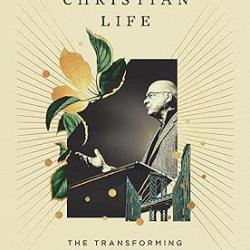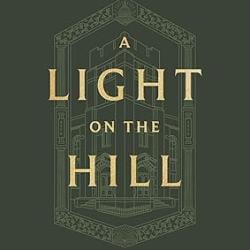I’m not entirely sure why, but I missed Redwall when it was first published in 1986. I mean, sure, I was three at the time. So I guess I’ve got some kind of excuse. But still, it really is strange that I didn’t even hear of Redwall or any of it’s numerous sequels, prequels, graphic novels, or the TV show/musical until 2010, when I was introduced to them by a gal I was dating at the time. (Who clearly has terrible judgment, given that she eventually married me.)

The point here isn’t that I get weirdly nostalgic about being a toddler, it’s that somehow Redwall was not picked up by the Evangelical/Fundamentalist subculture of the late 1980’s/early 1990’s. And that is both surprising and unfortunate. It’s surprising because there’s nothing in Redwall that is objectionable to Christian sensibilities; it is unfortunate because in the 1980’s and early 1990’s we lived in a parched young adult wilderness. I’ll have more to say about this in a review of the Harry Potter series down the road, but suffice it to say that if you were a Christian who wanted to read fiction for young adults back then you had to choose between the bonnet-wearing Sadie Rose and the bonnet-wearing Mandie. Unless, that is, you were one of the few elect who had truly progressive parents, in which case you might be exposed to the non-bonnet-wearing Boxcar Children or even the Hardy Boys and Nancy Drew. All of these books (at least the ones that I have read) are okay, but they’re not going to generate any love of reading in young people.
All of this to say, Redwall fell under the radar and as a result I missed out on an excellent book.
For those who’ve not read it, Redwall is the story of a Medieval-ish abbey full of woodland critters (with an emphasis on mice) which comes under attack by the brigand rat Cluny the Scourge and his army. In order to defeat the invaders, the peaceful inhabitants must learn to defend themselves while Matthias the mouse searches for the lost weapons of the ancient hero Martin the Warrior.
Here are a few thoughts/questions I had while reading the book:
- Just what is the scale of this book anyway? I mean, is it a human-sized abbey with regular-sized animals? Given the events, that seems mostly likely (but then how do we explain a rat-built battering ram or a mole-dug tunnel actually being effective on the walls?). Or are these human-sized animals? Or is the abbey a mouse-sized abbey? I know, I know, it’s just a story. But it’s a good story, and that means I want to know more.
- For an abbey, there’s little reference to/note of God. I doubt this is because the author was taking some kind of hyper-Protestant shot at Medieval Catholicism. More likely this is just in the Lord of the Rings vein where Providence is clearly at work behind the scenes and yet the surface-level narrative is straightforward. Again, it’s just a story and we shouldn’t over-think it. But the use of dreams as guides does raise the question.
- Asmodeus is a better villain than Cluny.
- The themes in this book are simple (mostly), but decent. Cluny delights in violence and wants power; the residents of Redwall are reluctantly violent and only want to live in peace. What’s more, the best guide to the present (if we must be violent) is the past. The past is full of clues and tools that will help us deal with the problems of the present.
- This book needed more badgers.
All that in addition to an engaging plot, interesting characters, and a world that begs for further exploration–which we get in the twenty-one other books in the series. Hopefully that’s enough to convince you to go and read this excellent little book!
Dr. Coyle Neal is co-host of the City of Man Podcast and an Assistant Professor of Political Science at Southwest Baptist University in Bolivar, MO, where he does not delight in violence but does delight in eating at least some of the kinds of animals that make an appearance in Redwall.












